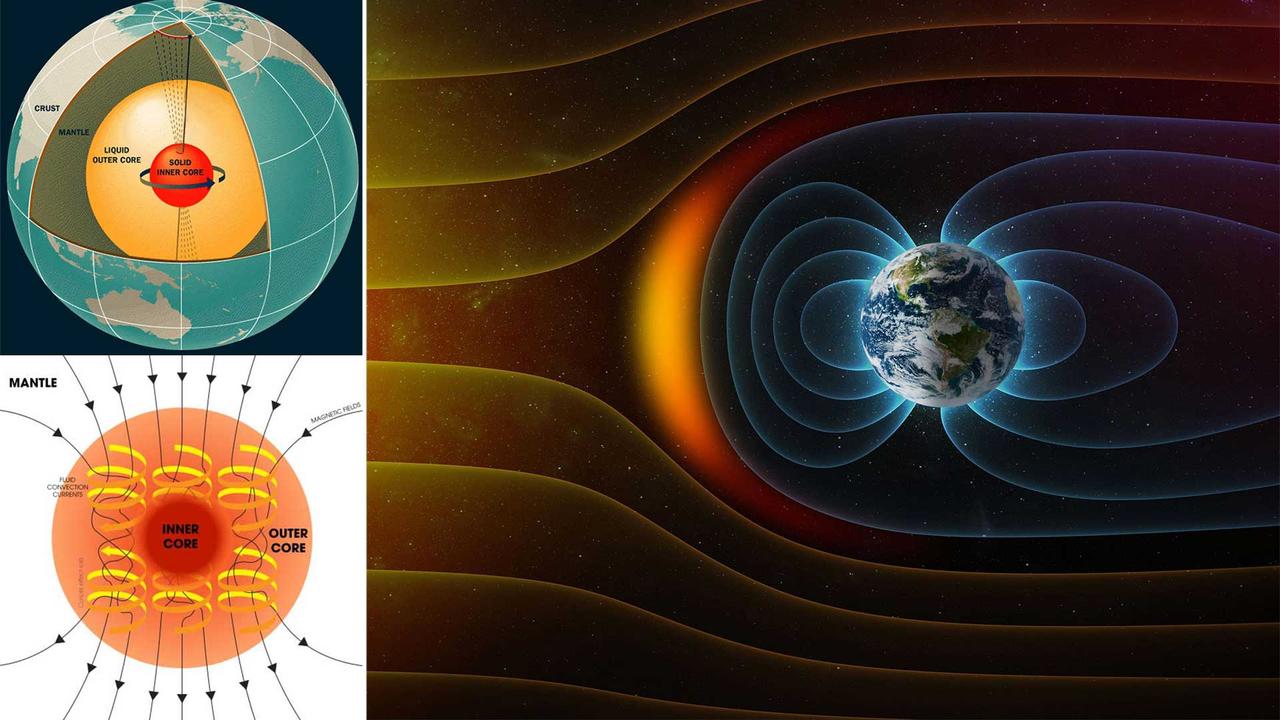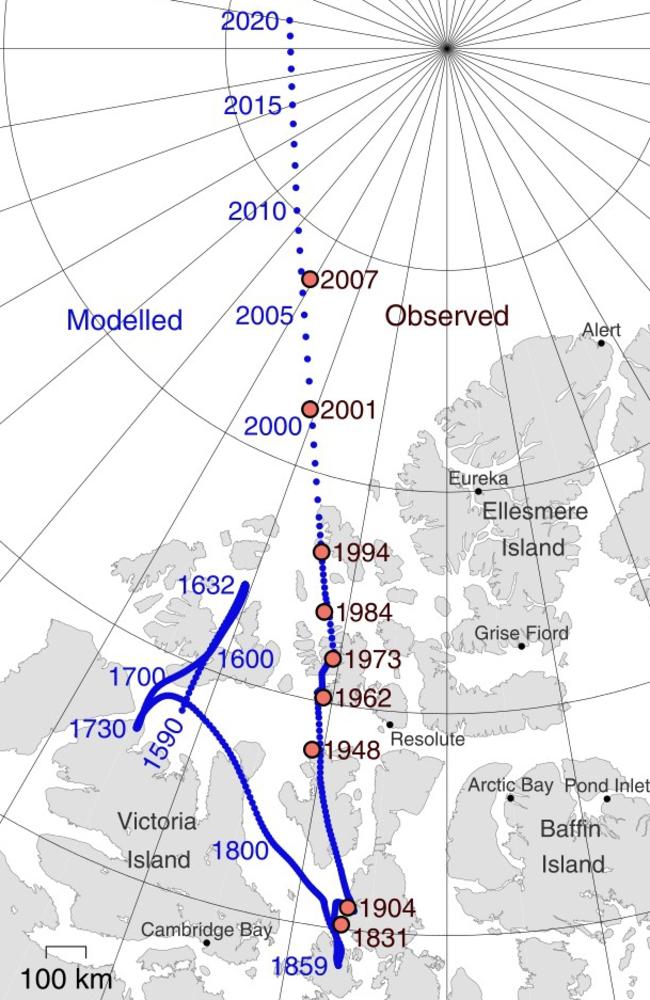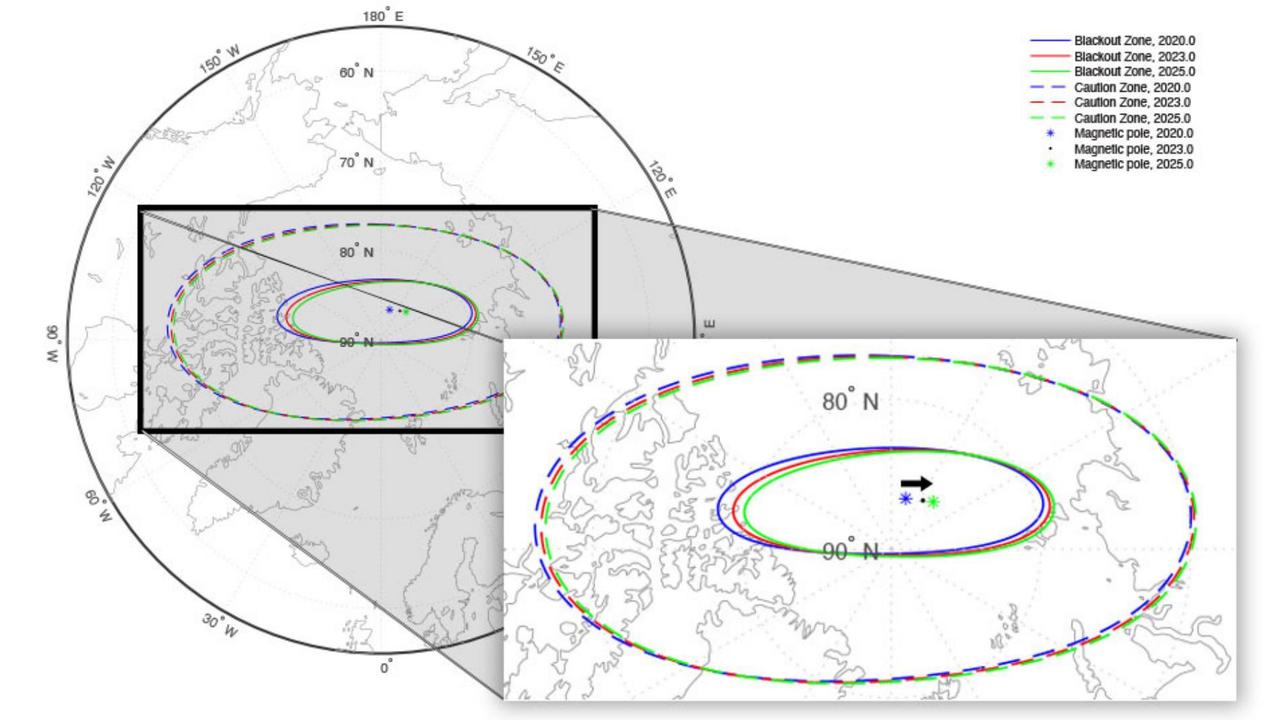Mysterious magnetic anomaly growing over Earth
A growing “pothole” above South America is resulting in a greater radiation risk and no one understands why it’s happening.
A growing “pothole” in space is shaking up satellites and prompting geophysicists to scratch their heads.
And things will only worsen as an increasingly angry sun throws supercharged particles our way.
The magnetic anomaly in the South Atlantic Ocean was first discovered in 1958. New observations by NASA and the ESA reveal it is evolving – potentially splitting in two. And that has practical implications for activity in low Earth orbit.
It’s a weakness in the magnetic Van Allen belt that forms a protective barrier against radiation from the sun and space. This both repels and traps charged particles, redirecting them towards the poles where intense periods of activity produce colourful aurora.
The image above (created by scientists Christopher Finlay, Clemens Kloss, Nils Olsen et al) shows a growing weak patch in the Earth’s magnetic field that is exposing satellites and the International Space Station to greater radiation risks.
But this patch over the South Atlantic, known as the South Atlantic Anomaly (SAA), allows particles to penetrate further towards the Earth than elsewhere. This doesn’t however appear to have any noticeable effect on the ground.
“The SAA is deepening and moving westwards,” the authors of a NASA study released earlier this year write. “The area affected has increased by about 5 per cent … This contour approximates the region where radiation damage to satellites is most likely to occur.”
The charged particles can short-circuit computers, corrupt stored data and interfere with sensor operations.
This is why space agencies and commercial satellite operators are keen to understand what’s happening.
Recent data shows the anomaly has developed two lobes of increasing magnetic field weakness. One is extending westward over Argentina and Brazil.
Understanding why may help geophysicists provide magnetic field “weather forecasts” for future satellite operators – and astronauts – keen to avoid the radioactive pitfalls it presents.
When the Earth gets gastro
Geophysicists believe the South Atlantic Anomaly results from the tilt of the Earth’s magnetic axis and the flow of molten metals in its outer core.
This ocean of iron-rich sludge 2900km beneath the planet’s crust is in constant flow. These swirling metal pools act like a giant electricity generator (a geodynamo), producing the currents that form the magnetic field.

But it hasn’t been assembled to the engineering precision we’re used to on the surface.
The interaction between the molten core and the solid mantle floating above it is inconsistent. Dips and rises in this boundary add an element of chaos to the flow of metals superheated to about 5000C. This, in turn, causes the tilt and drift of the magnetic poles to change over the millennia.
The Magnetic North Pole, for example, is currently moving towards Russia at a speed of about 45km per year. That’s down from the 55km per year observed in 2007.

But some disruption in the convective currents that keep the molten metal dynamo turning is believed to be causing the dip in magnetic field strength over the South Atlantic.
New research from the University of Leeds indicates it may have something to do with the characteristics of metals cooling at the boundary of the core and mantle.
Through the danger zone
Research by Dr Jonathan Mound and Professor Christopher Davies shows that cooling is not uniform. Seismic analysis reveals “hot zones” under Africa and the Pacific. Computer modelling indicates this weakens the magnetic field above.

“One of the things that the magnetic field in space does is deflect charged particles emitted from the sun,” Dr Mound says. “When the magnetic field is weaker, this protective shield is not so effective. So, when satellites pass over that area, these charged particles can disrupt and interfere with their operations.”
That’s why satellites approaching the SAA now often turn off their non-essential sensitive equipment to protect them as they pass through the region. And astronauts aboard the International Space Station avoid spacewalks when it is in the area.
And it’s not likely to go away any time soon, the researchers say.
“Processes in the mantle happen very slowly, so we can expect the temperature anomalies in the lower mantle will have stayed the same for tens of millions of years,” Dr Mound says. “Therefore, we would expect the properties of the magnetic field they create also to have been similar over tens of millions of years.”
But its changing moods are likely to keep space operators on their toes.
“The hotter, outer core is quite a dynamic fluid region,” he says. “So, the heat flows and the magnetic field properties they cause will probably fluctuate on shorter timescales, perhaps for hundreds to thousands of years.”
Jamie Seidel is a freelance writer | @JamieSeidel






